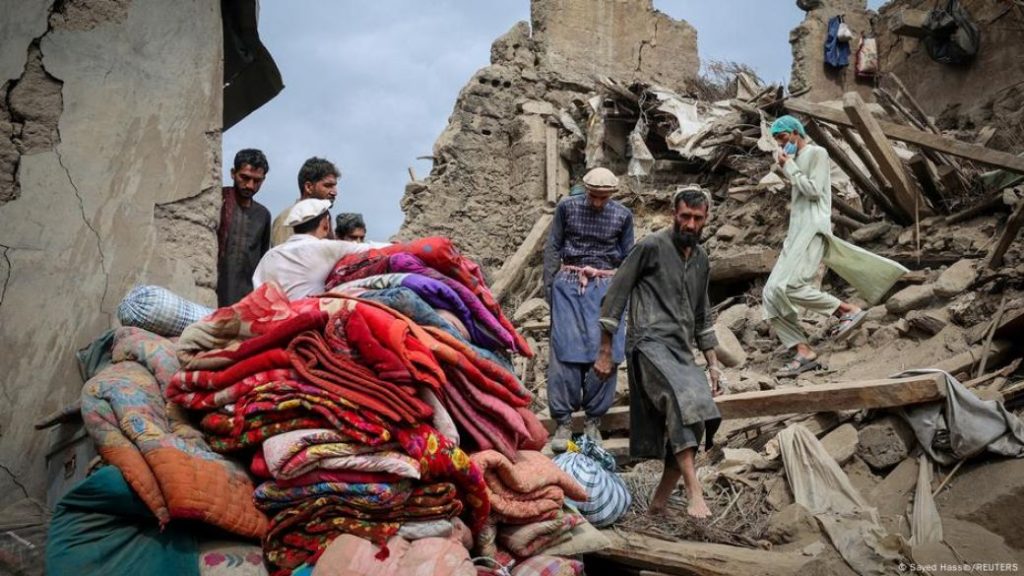
Earthquake
Afghanistan quake: Why are women struggling to get help?
After Afghanistan’s deadly earthquake, injured women and girls face a dire lack of medical care. Taliban restrictions and cultural barriers leave many without help.
One of Afghanistan’s worst earthquakes in history struck the country’s eastern provinces of Kunar and Nangarhar on Sunday with a magnitude of 6 at a shallow depth of 10 kilometers (6 miles).
More than 1,400 people have died, according to the Taliban.
At least 3,124 others were injured, and more than 5,400 houses were destroyed.
Women are notably absent from the majority of photos and videos from the earthquake zone released by news agencies and aid organizations. Women are not even seen among the injured people who have been hospitalized.
There are no official laws about male guardianship in Afghanistan, but the Taliban have said women cannot move around or travel a certain distance without a man who is related to them by blood or by marriage. Afghan women are also required to hide not only their faces and bodies but also their voices outside the home.
“Male family members do not allow women or girls to be seen by strangers,” women’s rights activist Fatemeh Rezaei told DW. “They also don’t want strangers helping them.”
Rezaei lives in the western city of Herat — which is far from the earthquake zone — but she is in contact with activists across the country.
Volunteer female doctors who were near remote villages in the mountainous region and wanted to help in the immediate aftermath of the quake were prevented from doing so by the Taliban. Men from the villages also rejected their help.
“We don’t even know whether and how women were injured,” Rezaei said.
More people are still feared trapped under the rubble. Indrika Ratwatte, the UN humanitarian coordinator in Afghanistan, said on Tuesday that even reaching the disaster was a “huge challenge.”
During the crucial first 24 hours, access was severely limited because landslides and rockfalls had destroyed several access roads.
Many people were buried as they slept when the earthquake happened and became trapped under the roofs of their homes, which were made of clay and wood. The region is remote and lacks basic infrastructure in many places. Even before the earthquake’s destruction, many areas didn’t have electricity.
Local sources in Kunar and Nangarhar reported that the medical centers in the provinces are facing a severe shortage of female doctors, which significantly complicates the treatment of injured women.
“We have information about the deaths of several injured pregnant women who died due to the lack of female doctors,” Zahra Haghparast, a dentist, told DW.
“Do you know how many female doctors and nurses in Afghanistan are currently ready to set out immediately to help these injured women?” Haghparast asked. “But the Taliban won’t grant them permission.”
Haghparast, who now lives in Germany, was forced to close her dental practice in Kabul after the Taliban returned to power in 2021, following the withdrawal of US and NATO forces.
Her protest activities, together with her association with other women who were forced to give up their work and withdraw from public life, made her a target of the Taliban.
She was arrested, mistreated, and released in exchange for money.
According to Haghparast, the reason local men reject help from women is rooted in Taliban policy.
“Before the Taliban, we had a period in which society had begun to change,” she told DW, adding that the Taliban “are reversing everything.”
“The country needs female doctors,” Zahra pointed out. “But women are no longer allowed to study. The Taliban have severely restricted the work of female doctors, so the injured cannot be helped in this critical situation.”
Even the Afghan Red Crescent — which has sent aid and medical teams to the affected provinces — has hardly any female doctors available to provide emergency relief.
The August 31 earthquake has further worsened an already catastrophic humanitarian situation in Afghanistan. The West significantly reduced its aid to Afghanistan when the Taliban took over the country.
Some 64% of the population of 41.5 million lives in poverty, according to the UN, with 50% dependent on humanitarian aid for survival and 14% suffering from acute hunger.
The EU announced after the quake that it will forward €1 million ($1.16 million) as well as 130 tons of aid materials to “humanitarian partners that are already carrying out relief operations on the ground.”
The bloc said it will fly the emergency supplies — including tents, clothes, medical supplies and water purification equipment — to Kabul.
